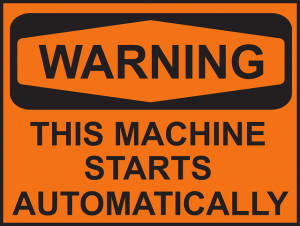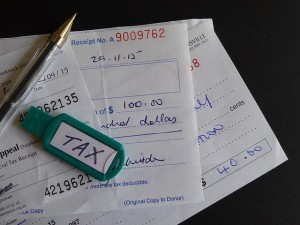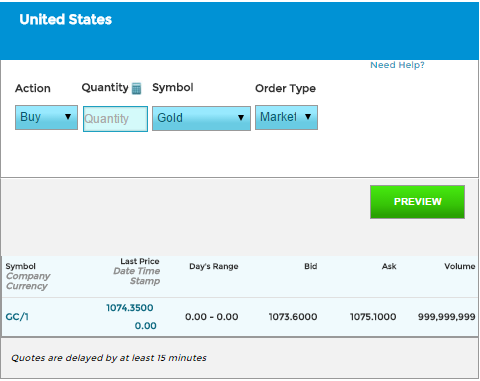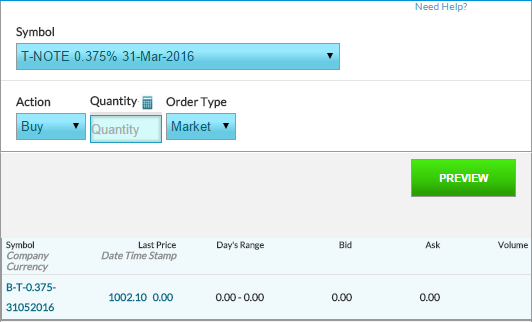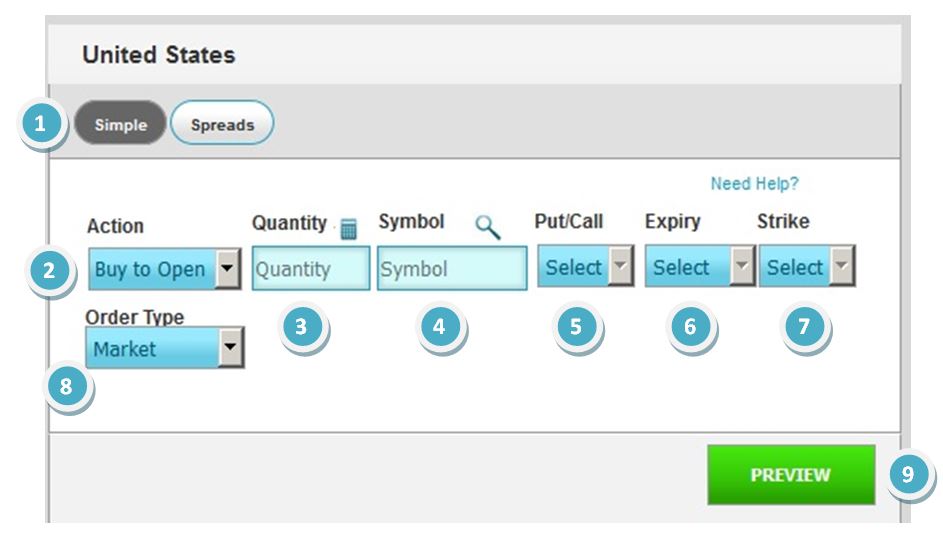The Human Resources department at a business is in charge of everything from hiring and firing employees, organizing and implementing training programs, resolving internal conflicts, determining the pay scales, and everything in between.
Human Resources Role
The Human Resources department is concerned with the specific employees of the company, rather than sales, marketing, or product development. In a nutshell, the Human Resources department of any company works to make sure the employees are the best they can be.
Managerial Roles
From a managerial perspective, the Human Resources department fills five major roles:
 Executive role – The HR department are specialists in areas that encompass the management of employees.
Executive role – The HR department are specialists in areas that encompass the management of employees.- Audit role – HR inspects other departments to make sure health & safety policies, and training are being enforced aligned with the company’s HR policy.
- Facilitator role – HR helps other departments reach their goals that the company has laid out. This typically means developing training programs, and making sure different departments can work together efficiently.
- Consultancy role – HR advises managers how to approach and solve specific issues professionally. This usually means resolving personal disputes with managers and employees.
- Service role – The HR department is also responsible for raising awareness of the main mission of the company and any new corporate policies. This means they are usually responsible for most mass internal communications.
Day-To-Day Roles
There are also major HR activities that managers face in the day-to-day activity at work. These activities may vary in different organizations and may be responsibilities of not only HR managers, but other managers as well. Most of the day-to-day actions revolve around hiring, training, compensation, and employee reviews. The most common activities are:
 Choosing and hiring employees – The HR department oversees setting job qualifications and sifting through résumés and choosing the most qualified candidate for the interview.
Choosing and hiring employees – The HR department oversees setting job qualifications and sifting through résumés and choosing the most qualified candidate for the interview.- Paperwork & orientation – HR makes sure that the newly hired employees fill out several forms to get them ready to start the job such as the W-4 and I-9, and introduces the new employees to the other workers in the organization.
- Training & development – HR trains the new employees, which may involve hands-on training or just handing out a manual. The actual training exercises are usually conducted by the manager to whom each new employee reports, but the HR department is responsible for maintaining “best practices” and general training regarding corporate norms. HR also sets up training for existing employees to improve their skills in their job.
- Compensation – HR determines the best compensation package for the organization that best fits their employee’s needs. Compensation includes; salary, 401k plans, vacation, personal time, and benefits.
- Performance appraisals – HR managers develop these forms to determine the percentage amounts of raises each employee should receive. This paperwork serves as a review for the employee and allows them to know their strengths and weaknesses.
- Safety & health – All HR departments must ensure that the work environment is safe. HR responsibilities in this field depend on the type of company that they work for. An HR manager in an accounting firm will do less of this, but an HR manager in a welding business might do this more. Also, the HR manager in a small business is usually responsible for posting safety procedures in the office.
- Managing legal issues – HR must ensure that the organization does not partake in any discriminatory acts. The Equal Employee Opportunity Act (EEO) is a law that all HR departments should be aware of because it states that companies should not discriminate based on ethnicity, race, disability, or gender.
These Human Resource activities help organizations achieve their goals of having an effective and profitable business as well as recruiting and maintaining a core staff to work for the company. It is important that HR keeps employees motivated in the workplace, both with the help of motivational techniques such as promotions, pay increases and bonuses, but also conducting reviews of training and continuing education.
Building Human Resource Requirements
Human Resource Planning is a process that identifies current and future HR needs for an organization to reach its goals. HR Planning serves as a link between HR management and the overall business plan of the company while developing a strategy that assists in the organization’s goals. The major responsibility for Human Resource Planning (HPR) is to ensure the best fit between employees and jobs while being able to meet short-term challenges.
Needs Analysis
To determine Human Resource requirements, there is something called a Needs Analysis.
A Needs analysis is a valuable technique that focuses on how a product addresses the needs of a human consumer. In Human Resources, this needs analysis is used to determine training needs for an employee to not only help them grow as a worker, but to also help the company grow. By determining these training needs, an organization can decide what specific knowledge and skills are needed to improve the employee’s performance in the company. The 4 main methods are:
- Surveys – Surveys focus on specific areas of performance deficiency and can be given by management or an outside party. A written questionnaire allows an employee to answer anonymously, freely and truthfully, while the questions are targeted to specific tasks.
- Observations – This is when employees are watched at work, which can give HR enough information on how the employee works and how well they work.
- Interviews – Interviews involve talking to each employee an evaluating their work and how well they do the work that it assigned to them. This is a decentralized and democratic approach in training because it allows the employee to give their opinions.
- Customer comment cards – This is when customers serve as a major source of information as to how well the employee does their job. Secret shoppers may partake in this method and can indicate to management what each employee needs to work on.
The needs analysis is a crucial activity in the training and evaluation process, as it allows HR to separate the strong employees from the weak ones. This, in turn, is used to compensate the best employees, and identify how to improve training and best practices to improve overall efficiency.
Internal Vs External
Human Resources are usually internal, which means they operate inside the company for the employees that work within the organization. For example, Apple headquarters has its set of Human Resources, and each individual apple store within the country (and world) usually has its own smaller HR department.
However, some companies, usually smaller businesses, will outsource some or all of their Human Resources to an outside company. This is known as “Outsourcing”.
Outsourcing
Outsourcing occurs in a business when they want to reduce costs by having a third party complete specific job functions such as manufacturing, customer service, or Human Resources.
Outsourcing Human Resource Planning occurs when a business instructs an external supplier to take risk and responsibility for HR functions and performs these tasks for the business. There are two main reasons why a company looks to outsource their human resources:
- Smaller businesses may not necessarily be big enough for a full-time human resources department, so contracting an outside firm may be cheaper than doing all HR in-house.
- Specialized HR firms are generally very up-to-date on any changes with laws/regulations, such as new labor laws, subsidies, and other changes.
This allows the internal resources to focus on the strategic operations of the business. HR outsourcing is great for small companies to transform and get expertise without hiring extra personnel with high salaries. When HR is outsourced, it minimizes the businesses risk because labor laws change regularly and it can be difficult for the employer to be up-to-date with the new laws.
On the other hand, the impact on the actual employee relationships can be murkier. As an advantage, it can help businesses manage employee performance because the outsourcing firm is a truly unbiased source of information, which can help cut through entrenched management attitudes and practices.
As a disadvantage, it becomes more difficult for the HR department to have a direct personal relationship with any employees. This is problematic because outsourced HR firms will be less effective with employee recruitment and training than in-house HR departments, since the outsourced HR is less familiar with the overall business strategy and corporate vision. Because of this, very small companies tend to outsource their Human Resources, while more companies bring the HR department in house as they grow. This lesson is part of the PersonalFinanceLab curriculum library. Schools with a PersonalFinanceLab.com site license can get this lesson, plus our full library of 300 others, along with our budgeting game, stock game, and automatically-graded assessments for their classroom - complete with LMS integration and rostering support!

Get PersonalFinanceLab
[qsm quiz=114]

 What is and is not “Ethical” is often very subjective. Over time, several different ways of defining ethical behavior have arisen.
What is and is not “Ethical” is often very subjective. Over time, several different ways of defining ethical behavior have arisen. All businesses are based on a foundation of trust. Customers expect to get their money’s worth from a product they buy (that it will do what is advertised, is free from defect, and is safe to use). Investors expect to know how their money is being used to run the business (though accurate financial statements, truthful statements from the management, and adherence to core principles). Nothing destroys a business faster than losing the public trust, which is why maintaining strong business ethics is essential in the business world today.
All businesses are based on a foundation of trust. Customers expect to get their money’s worth from a product they buy (that it will do what is advertised, is free from defect, and is safe to use). Investors expect to know how their money is being used to run the business (though accurate financial statements, truthful statements from the management, and adherence to core principles). Nothing destroys a business faster than losing the public trust, which is why maintaining strong business ethics is essential in the business world today. The government actively monitors companies throughout the country, through quality control tests on products, audits of tax forms and financial statements, and other avenues. If unethical behavior is discovered by the government, a company will usually face extremely stiff penalties, and the management may be criminally liable. The company will also likely be forced to engage in lengthy and expensive legal battles, and may have its reputation irreparably damaged.
The government actively monitors companies throughout the country, through quality control tests on products, audits of tax forms and financial statements, and other avenues. If unethical behavior is discovered by the government, a company will usually face extremely stiff penalties, and the management may be criminally liable. The company will also likely be forced to engage in lengthy and expensive legal battles, and may have its reputation irreparably damaged. You probably will not see a business’s Code of Ethics until after you start. For most employees, they usually do not even take a good look until a major ethical issue has already come up, but your life will be made much easier by evaluating the Code of Ethics early, and bringing up any concerns with your managers before issues arise.
You probably will not see a business’s Code of Ethics until after you start. For most employees, they usually do not even take a good look until a major ethical issue has already come up, but your life will be made much easier by evaluating the Code of Ethics early, and bringing up any concerns with your managers before issues arise. This act was created in the wake of the Enron Collapse. Enron was a company that primarily dealt with energy. Throughout the late 2000’s, the corporate culture of Enron was obsessed with driving Growth At Any Cost – the company’s daily stock price was posted in the elevators, and associate bonuses were based almost entirely on short-term gains. At lower levels of management, managers were found to have been artificially manipulating energy levels in several states, causing artificial shortages to drive up energy prices. At higher levels, senior managers were found to be manipulating the “book value” of many assets to make failing assets seem profitable. Eventually the entire company collapsed when journalists began investigating their seemingly impossible winning streak, bringing down both one of the biggest energy companies in the world, and one of the most (formally) trusted accounting firms.
This act was created in the wake of the Enron Collapse. Enron was a company that primarily dealt with energy. Throughout the late 2000’s, the corporate culture of Enron was obsessed with driving Growth At Any Cost – the company’s daily stock price was posted in the elevators, and associate bonuses were based almost entirely on short-term gains. At lower levels of management, managers were found to have been artificially manipulating energy levels in several states, causing artificial shortages to drive up energy prices. At higher levels, senior managers were found to be manipulating the “book value” of many assets to make failing assets seem profitable. Eventually the entire company collapsed when journalists began investigating their seemingly impossible winning streak, bringing down both one of the biggest energy companies in the world, and one of the most (formally) trusted accounting firms. Ahead of the Great Recession, many banks were issuing record numbers of sub-prime loans, or loans issued to lenders with poor credit history or low earnings. Sub-prime loans in and of themselves are not bad – they can be an important way to help uplift people from poverty. What was new was the introduction of wide-spread derivatives trading involving investment banks using something called derivatives and interest-rate swaps, which created a potential for abuse.
Ahead of the Great Recession, many banks were issuing record numbers of sub-prime loans, or loans issued to lenders with poor credit history or low earnings. Sub-prime loans in and of themselves are not bad – they can be an important way to help uplift people from poverty. What was new was the introduction of wide-spread derivatives trading involving investment banks using something called derivatives and interest-rate swaps, which created a potential for abuse.





















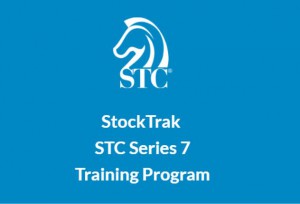












 Dog Bites. If you have a dog that bites someone, your premiums will immediately increase. This is the single most common reason why homeowners file insurance claims – their dog bites someone, who then sues for damages.
Dog Bites. If you have a dog that bites someone, your premiums will immediately increase. This is the single most common reason why homeowners file insurance claims – their dog bites someone, who then sues for damages.












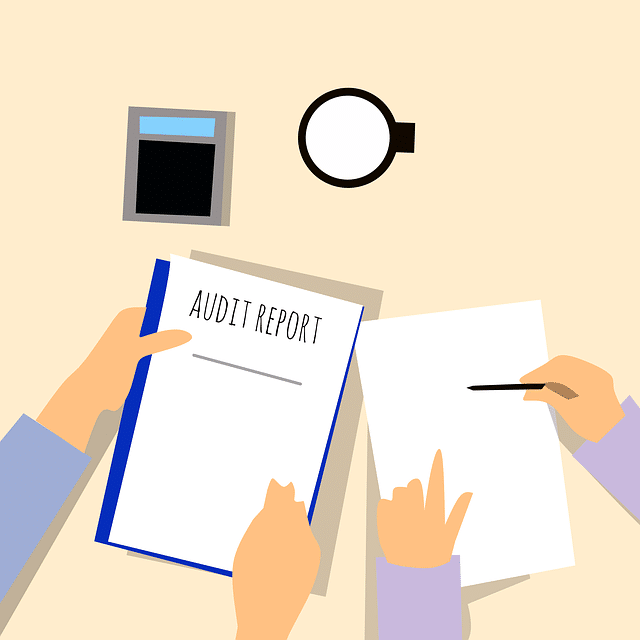

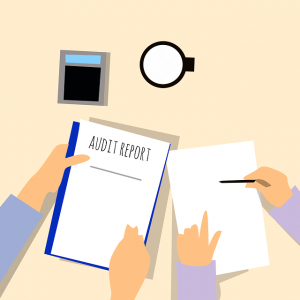













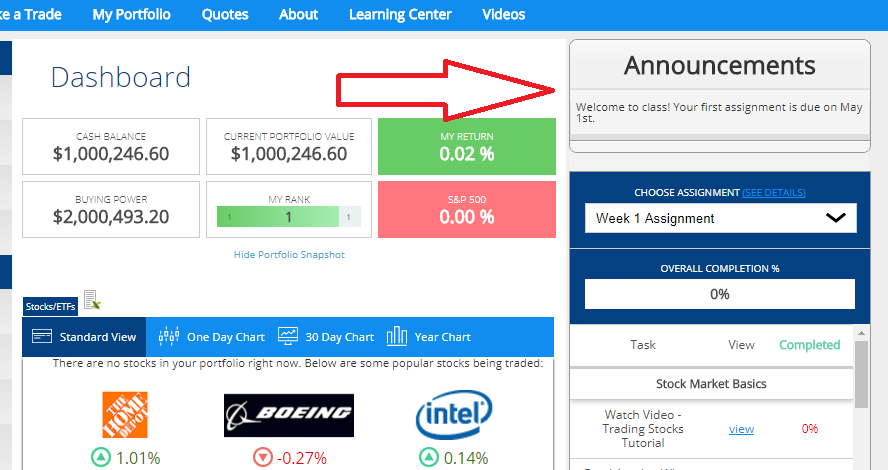
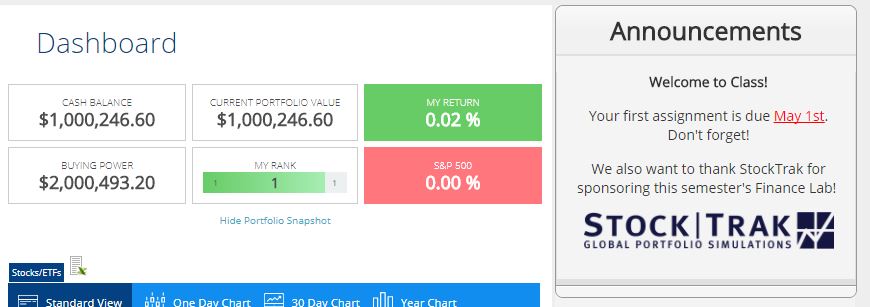

 Because convenience goods carry a relatively low price, consumers usually don’t bother price-checking—they simply stick with the brand they have always bought. For that reason, pricing isn’t overly important as long as the company doesn’t raise prices to the point of being significantly different from competitors. If someone always purchased Crest toothpaste for their entire life, they will not bother checking Colgate’s price to see if they can save a few cents; it’s a habitual purchase. Wide-scale promotion is very important in order to build brand recognition. Typically for a quick, impulsive purchase consumers will choose a brand that they have heard of and are familiar with (Heinz ketchup, for example, holds over 60% market share in the US largely because of its iconic brand). Strategic placement is also frequently used in an attempt to sell convenience goods. A common example is when stores will place candy and other small items right next to the checkout line in hopes of stirring up impulse purchases.
Because convenience goods carry a relatively low price, consumers usually don’t bother price-checking—they simply stick with the brand they have always bought. For that reason, pricing isn’t overly important as long as the company doesn’t raise prices to the point of being significantly different from competitors. If someone always purchased Crest toothpaste for their entire life, they will not bother checking Colgate’s price to see if they can save a few cents; it’s a habitual purchase. Wide-scale promotion is very important in order to build brand recognition. Typically for a quick, impulsive purchase consumers will choose a brand that they have heard of and are familiar with (Heinz ketchup, for example, holds over 60% market share in the US largely because of its iconic brand). Strategic placement is also frequently used in an attempt to sell convenience goods. A common example is when stores will place candy and other small items right next to the checkout line in hopes of stirring up impulse purchases. Strategically, product quality and pricing are much more important for shopping goods than for convenience goods. With customers actively weighing their options, it is vital for a company to provide an offering with attractive value. This can mean selling a product that is better quality than competitors for the same price or selling a product that is similar in quality but at a lower price. The larger the purchase, the more important marketing the good becomes because customers will more actively consider the product’s price-value relationship. Promotion is also important for shopping goods in order to differentiate a product from its competitors and to communicate the value proposition to customers. Whereas promoting convenience goods simply focused on awareness, promoting shopping goods must focus on separating a product from its competition in the minds of customers.
Strategically, product quality and pricing are much more important for shopping goods than for convenience goods. With customers actively weighing their options, it is vital for a company to provide an offering with attractive value. This can mean selling a product that is better quality than competitors for the same price or selling a product that is similar in quality but at a lower price. The larger the purchase, the more important marketing the good becomes because customers will more actively consider the product’s price-value relationship. Promotion is also important for shopping goods in order to differentiate a product from its competitors and to communicate the value proposition to customers. Whereas promoting convenience goods simply focused on awareness, promoting shopping goods must focus on separating a product from its competition in the minds of customers. Typically, consumers of specialty goods do not have much price sensitivity—they are willing to pay whatever price is necessary for the product or brand that they prefer. Someone purchasing a Ferrari likely doesn’t care if a similar car is a few thousand dollars cheaper; they are paying for the brand name and the social status that comes with owning a Ferrari. Therefore, more of the company’s strategic focus needs to be centered on developing outstanding and innovational products that will retain the loyalty of their following. Promotion focuses on demonstrating the company’s latest great product and when/where people can buy it. It is also important to promote status that comes with the brand.
Typically, consumers of specialty goods do not have much price sensitivity—they are willing to pay whatever price is necessary for the product or brand that they prefer. Someone purchasing a Ferrari likely doesn’t care if a similar car is a few thousand dollars cheaper; they are paying for the brand name and the social status that comes with owning a Ferrari. Therefore, more of the company’s strategic focus needs to be centered on developing outstanding and innovational products that will retain the loyalty of their following. Promotion focuses on demonstrating the company’s latest great product and when/where people can buy it. It is also important to promote status that comes with the brand. The key to marketing unsought goods is to remind consumers that the product exists and to convince them that they need to purchase the product to avoid future hardships. For example, a company might run an emotional campaign focusing on how the potential customer’s loved ones will suffer financially if the customer dies unexpectedly. If successful, this would convince the buyer that purchasing a policy is a payment toward protecting their family and they would be compelled to go through with it in order to not have to worry about the potential danger. A lot of promotion is necessary, because consumers rarely think about buying such products unless they are prompted to.
The key to marketing unsought goods is to remind consumers that the product exists and to convince them that they need to purchase the product to avoid future hardships. For example, a company might run an emotional campaign focusing on how the potential customer’s loved ones will suffer financially if the customer dies unexpectedly. If successful, this would convince the buyer that purchasing a policy is a payment toward protecting their family and they would be compelled to go through with it in order to not have to worry about the potential danger. A lot of promotion is necessary, because consumers rarely think about buying such products unless they are prompted to. There are certain issues or uncertainties within the product classification model that need to be taken into consideration. One problem is that certain goods can potentially fall under multiple categories. For example, certain customers may see diamonds as a shopping good and compare prices extensively between brands before making a purchase. Other consumers may have chosen one brand as the best (ie Tiffany & Co.) and they buy that brand for the quality and status it brings. Sometimes product classification can vary depending on the individual customer that is buying the good.
There are certain issues or uncertainties within the product classification model that need to be taken into consideration. One problem is that certain goods can potentially fall under multiple categories. For example, certain customers may see diamonds as a shopping good and compare prices extensively between brands before making a purchase. Other consumers may have chosen one brand as the best (ie Tiffany & Co.) and they buy that brand for the quality and status it brings. Sometimes product classification can vary depending on the individual customer that is buying the good.
 There are two ways to reduce your tax bill – a “Deduction” and a “Tax Credit”.
There are two ways to reduce your tax bill – a “Deduction” and a “Tax Credit”. To make it easier to file taxes, everyone has the option to choose between “Itemized Deductions” or “Standard Deduction”. If you file an “Itemized Deduction”, you need to provide evidence of each item you’re deducting (like receipts and proof it is eligible), which can be very time consuming for small deductions.
To make it easier to file taxes, everyone has the option to choose between “Itemized Deductions” or “Standard Deduction”. If you file an “Itemized Deduction”, you need to provide evidence of each item you’re deducting (like receipts and proof it is eligible), which can be very time consuming for small deductions.
 The Federal Child Tax Credit gives a simple tax credit for $1000 per child, up to a certain income threshold (between $55,000 and $110,000, depending on your marital status). If you earn more than this threshold, you will have $50 less tax credit for every $1000 over the threshold (so a married couple earning $120,000 would have a $950 tax credit). This tax credit is non-refundable.
The Federal Child Tax Credit gives a simple tax credit for $1000 per child, up to a certain income threshold (between $55,000 and $110,000, depending on your marital status). If you earn more than this threshold, you will have $50 less tax credit for every $1000 over the threshold (so a married couple earning $120,000 would have a $950 tax credit). This tax credit is non-refundable.  While you cannot write off any costs incurred in a job search, if you need to move between cities when you get a job, you can usually write off part of the moving expense. This is a deduction, subtracted from your taxable income.
While you cannot write off any costs incurred in a job search, if you need to move between cities when you get a job, you can usually write off part of the moving expense. This is a deduction, subtracted from your taxable income.  If you have a mortgage, some or all of your interest will be tax-deductible. Not all mortgage interest is tax-deductible – you need to provide evidence that your mortgage was taken out to buy your primary residence, or used for extensive renovations, and only applies to interest paid on loans up to $1 million. If your mortgage does not qualify, you can still write off the interest on the first $100,000 of your loan.
If you have a mortgage, some or all of your interest will be tax-deductible. Not all mortgage interest is tax-deductible – you need to provide evidence that your mortgage was taken out to buy your primary residence, or used for extensive renovations, and only applies to interest paid on loans up to $1 million. If your mortgage does not qualify, you can still write off the interest on the first $100,000 of your loan.  The “Saver’s Credit” is another word for the Retirement Savings Contribution Credit – the purpose of this credit is to encourage saving in retirement accounts and IRAs. This credit is for up to $2000, and is calculated as a percentage of your contributions (either 50%, 20%, or 10%, depending on your income).
The “Saver’s Credit” is another word for the Retirement Savings Contribution Credit – the purpose of this credit is to encourage saving in retirement accounts and IRAs. This credit is for up to $2000, and is calculated as a percentage of your contributions (either 50%, 20%, or 10%, depending on your income). 
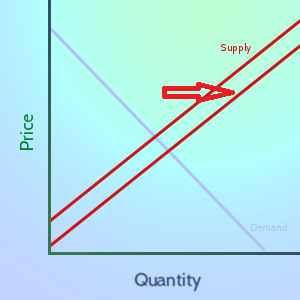 Supply and demand are among the most basic factors on market price for goods, and often an individual firm has little control over them. When there is an oversupply of a product in the market, assuming constant demand, the price of the good will decrease as firms attempt to unload their excess of inventory. Companies that refuse to lower price during a period of oversupply can be punished with huge drops in sales and a buildup of inventory they can’t get rid of. Oil is a prime example of an industry that is currently in oversupply—increased production has led to prices falling from well over $100/barrel down to around $50/barrel today.
Supply and demand are among the most basic factors on market price for goods, and often an individual firm has little control over them. When there is an oversupply of a product in the market, assuming constant demand, the price of the good will decrease as firms attempt to unload their excess of inventory. Companies that refuse to lower price during a period of oversupply can be punished with huge drops in sales and a buildup of inventory they can’t get rid of. Oil is a prime example of an industry that is currently in oversupply—increased production has led to prices falling from well over $100/barrel down to around $50/barrel today. Line pricing is when a company offers products at several different levels of quality (typically low, medium, and high). Pricing is set to reflect the relative quality of each offering, so the low-quality product would be at a discount price, the medium product would be at an average price, and the high-quality product would be at a premium price. The iPad is an example of this strategy—customers have the choice of buying a very basic model or they can pay several hundred dollars more to get one with higher quality and better features. As its name indicates, the line strategy is effective when a firm has a product line with several items that have a distinct difference in quality level. Segmented pricing can help clarify to consumers the added value that buying a better model entails and it provides customers some flexibility on deciding how much they want to spend.
Line pricing is when a company offers products at several different levels of quality (typically low, medium, and high). Pricing is set to reflect the relative quality of each offering, so the low-quality product would be at a discount price, the medium product would be at an average price, and the high-quality product would be at a premium price. The iPad is an example of this strategy—customers have the choice of buying a very basic model or they can pay several hundred dollars more to get one with higher quality and better features. As its name indicates, the line strategy is effective when a firm has a product line with several items that have a distinct difference in quality level. Segmented pricing can help clarify to consumers the added value that buying a better model entails and it provides customers some flexibility on deciding how much they want to spend. The loss leader strategy involves a company selling certain items at a loss in order to bring customers into the store. The assumption is that once customers are tempted into the store, they will have a tendency to buy other things as well that will generate the profit for the company. One very basic example of this are restaurants that sell kids’ meals for very cheap (even for free sometimes). The restaurant loses money on the kids’ meal, but makes their profit when the adults accompanying the children have to order full-price meals. This can be an effective strategy to generate store traffic, but firms must be careful to make sure that customers actually are buying products besides just the loss leaders.
The loss leader strategy involves a company selling certain items at a loss in order to bring customers into the store. The assumption is that once customers are tempted into the store, they will have a tendency to buy other things as well that will generate the profit for the company. One very basic example of this are restaurants that sell kids’ meals for very cheap (even for free sometimes). The restaurant loses money on the kids’ meal, but makes their profit when the adults accompanying the children have to order full-price meals. This can be an effective strategy to generate store traffic, but firms must be careful to make sure that customers actually are buying products besides just the loss leaders. Psychological pricing is an approach where prices are set based upon a psychological reaction that they will cause consumers. The ultimate goal of this tactic is to increase sales without significantly reducing prices. The most common example of this is when retailers price items one penny below an even dollar amount, $9.99 instead of $10 for example. Customers associate the $9.99 with the lower dollar amount of $9 rather than actively realizing that it is just one cent below $10. The massive usage of that tactic alone illustrates the success psychological pricing can have. It can be effective both for relatively low cost goods like gasoline or for big purchases like cars– $19,999.99 for some reason just seems a lot cheaper than $20,000.
Psychological pricing is an approach where prices are set based upon a psychological reaction that they will cause consumers. The ultimate goal of this tactic is to increase sales without significantly reducing prices. The most common example of this is when retailers price items one penny below an even dollar amount, $9.99 instead of $10 for example. Customers associate the $9.99 with the lower dollar amount of $9 rather than actively realizing that it is just one cent below $10. The massive usage of that tactic alone illustrates the success psychological pricing can have. It can be effective both for relatively low cost goods like gasoline or for big purchases like cars– $19,999.99 for some reason just seems a lot cheaper than $20,000. Technology has led to a very different environment for pricing than has been the norm in the past. With an increased ability to quickly “price-check” online, customers have become more sensitive to prices and it is more important to either be priced below competitors or to clearly communicate the brand’s superiority to consumers. It is also easier for customers to switch brands in that they can shop online and avoid having to travel to multiple stores to find the best deal. In these ways, additional power has shifted to the consumer in determining the way prices are set.
Technology has led to a very different environment for pricing than has been the norm in the past. With an increased ability to quickly “price-check” online, customers have become more sensitive to prices and it is more important to either be priced below competitors or to clearly communicate the brand’s superiority to consumers. It is also easier for customers to switch brands in that they can shop online and avoid having to travel to multiple stores to find the best deal. In these ways, additional power has shifted to the consumer in determining the way prices are set.
 Revenue represents income earned by the firm through the primary goods and/or services provided. It is the income earned from the firm’s operating activities. For example, Mike’s Computers specializes in selling computers to small businesses. During the year, he sells 10,000 computers at $800, and nothing else. The total sales from the computers sold during the year, $8,000,000, would be Mike’s revenue.
Revenue represents income earned by the firm through the primary goods and/or services provided. It is the income earned from the firm’s operating activities. For example, Mike’s Computers specializes in selling computers to small businesses. During the year, he sells 10,000 computers at $800, and nothing else. The total sales from the computers sold during the year, $8,000,000, would be Mike’s revenue. Expenses can either be capitalized or expensed. Capitalization effectively means the cost of an assets can spread out over the life of an asset. A machine, for example, may be capitalized rather than expensed because the asset has a long useful life.
Expenses can either be capitalized or expensed. Capitalization effectively means the cost of an assets can spread out over the life of an asset. A machine, for example, may be capitalized rather than expensed because the asset has a long useful life. Losses are similar to gains in that both are recognized on the income statement only when an asset is sold and a loss is taken. Like gains, there can also be unrealized losses.
Losses are similar to gains in that both are recognized on the income statement only when an asset is sold and a loss is taken. Like gains, there can also be unrealized losses.
 Income tax is the tax you pay on your income, usually directly taken out of your paycheck. Everyone who works in the United States should be paying income tax on their earnings.
Income tax is the tax you pay on your income, usually directly taken out of your paycheck. Everyone who works in the United States should be paying income tax on their earnings. The
The  The basic income tax return form in the United States is known as the
The basic income tax return form in the United States is known as the  The IRS may also apply corrections directly based on their own calculations of your taxes owed. If this is the case, they will generally mail you a letter explaining how their calculation differs from theirs, along with a method to dispute their calculation.
The IRS may also apply corrections directly based on their own calculations of your taxes owed. If this is the case, they will generally mail you a letter explaining how their calculation differs from theirs, along with a method to dispute their calculation.
 The purpose of the Financial Accounting Standards Board (FASB) is to establish and improve US GAAP. There are also auditing standards, enforced by the Public Company Accounting Oversight Board (PCAOB), and required by the SEC. The purpose of the PCAOB is to protect the public interest in the preparation of audit reports. The FASB and PCAOB are responsible for the oversight of all United States accounting. Internationally, the IFRS Foundation and the International Accounting Standards Board (IASB) oversee international accounting.
The purpose of the Financial Accounting Standards Board (FASB) is to establish and improve US GAAP. There are also auditing standards, enforced by the Public Company Accounting Oversight Board (PCAOB), and required by the SEC. The purpose of the PCAOB is to protect the public interest in the preparation of audit reports. The FASB and PCAOB are responsible for the oversight of all United States accounting. Internationally, the IFRS Foundation and the International Accounting Standards Board (IASB) oversee international accounting. To remedy this, the Sarbanes-Oxley Act of 2002 (SOX) was passed by U.S. Congress in 2002. The SOX Act is a United States federal law that introduced major change to the regulation of financial disclosures and corporate governance. The SOX Act has closed loopholes in accounting practices and increased the consequences for fraudulent activity. The accounting profession is constantly changing and must adapt effectively and efficiently to meet the demands of the economy and society. Developments in the accounting profession, economy, and society affect the profession and how it performs its role. The SOX Act is one example of how a new regulation forced the profession to adapt to change.
To remedy this, the Sarbanes-Oxley Act of 2002 (SOX) was passed by U.S. Congress in 2002. The SOX Act is a United States federal law that introduced major change to the regulation of financial disclosures and corporate governance. The SOX Act has closed loopholes in accounting practices and increased the consequences for fraudulent activity. The accounting profession is constantly changing and must adapt effectively and efficiently to meet the demands of the economy and society. Developments in the accounting profession, economy, and society affect the profession and how it performs its role. The SOX Act is one example of how a new regulation forced the profession to adapt to change. Accountants regularly face ethical dilemmas. Accountants seek to add value by reducing costs and increasing revenue. An accountant wants to produce favorable results for their company or client. Accountants must also have the public best interest in mind. Therefore, information must be represented fairly and accurately to be ethical.
Accountants regularly face ethical dilemmas. Accountants seek to add value by reducing costs and increasing revenue. An accountant wants to produce favorable results for their company or client. Accountants must also have the public best interest in mind. Therefore, information must be represented fairly and accurately to be ethical.

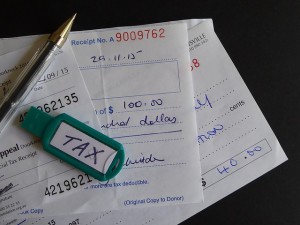


 The introduction stage marks the very first time a company brings a product to market. The main objective for companies at the beginning is not profit (often new products will generate losses because of high advertising costs and low sales) but rather developing a market for the product and building awareness among consumers. If successful, the company can then enjoy a better ROI in future stages as sales grow and relative costs lessen. An example of a product in the introduction stage could be when Amazon first rolled out their
The introduction stage marks the very first time a company brings a product to market. The main objective for companies at the beginning is not profit (often new products will generate losses because of high advertising costs and low sales) but rather developing a market for the product and building awareness among consumers. If successful, the company can then enjoy a better ROI in future stages as sales grow and relative costs lessen. An example of a product in the introduction stage could be when Amazon first rolled out their  If products make it through the introduction stage, they next advance to the growth period. This is when demand starts to take off for a product as companies promote to a wider audience in an attempt to build consumer preference over other brands and win market share. Because of increasing demand, companies are often able to start to make sizable profits in this stage. An example of a growth-stage product in today’s market could be drones; though they are a fairly new product, the market has been established and demand is rapidly growing.
If products make it through the introduction stage, they next advance to the growth period. This is when demand starts to take off for a product as companies promote to a wider audience in an attempt to build consumer preference over other brands and win market share. Because of increasing demand, companies are often able to start to make sizable profits in this stage. An example of a growth-stage product in today’s market could be drones; though they are a fairly new product, the market has been established and demand is rapidly growing. At some point, growth inevitably slows down and products reach the maturity stage. The top focus for managers at this point is protecting the market share they have earned, because the maturity stage is often the phase of the product life cycle with the most competition. Another key objective is to maximize profits—products in this phase of their life often turn into “cash cows” for companies that generate the funds necessary for developing new products. Apple’s (
At some point, growth inevitably slows down and products reach the maturity stage. The top focus for managers at this point is protecting the market share they have earned, because the maturity stage is often the phase of the product life cycle with the most competition. Another key objective is to maximize profits—products in this phase of their life often turn into “cash cows” for companies that generate the funds necessary for developing new products. Apple’s ( In the final stage of a product’s life, demand starts to decline as consumers move on to newer and more appealing products. Traditional telephones are an example of a product in this stage—with the emergence of cell phones, fewer and fewer people are using landlines and the market seems to be on its last legs.
In the final stage of a product’s life, demand starts to decline as consumers move on to newer and more appealing products. Traditional telephones are an example of a product in this stage—with the emergence of cell phones, fewer and fewer people are using landlines and the market seems to be on its last legs. While the product life cycle model is useful in many ways, it does have some issues. For one, there are products that do not seem to fit into the model. Brands like Coke (
While the product life cycle model is useful in many ways, it does have some issues. For one, there are products that do not seem to fit into the model. Brands like Coke (
 What exactly is management? Is there only one way to manage? Management is the organization and coordination of the activities within a business to meet specific goals. Management creates policy and organizes, plans, controls, and directs a company’s resources to complete the objectives of that policy. Do all managers manage the same way? Do they all follow the same guidelines to meet their goals? As a matter of fact, management can be done in a number of different ways to achieve different goals within a business. The different ways managers define guidelines, set goals, and organize the company is collectively known as “Management Theories“, while the ideas behind ways managers interact with associates and lower-level managers are known as “Motivational Theories“. Some of the most prevalent management theories were first formulated by by Frederick Taylor, Max Weber and Henri Fayol, while some of the most potent motivational theories were formulated by Abraham Maslow, and Frederick Herzberg.
What exactly is management? Is there only one way to manage? Management is the organization and coordination of the activities within a business to meet specific goals. Management creates policy and organizes, plans, controls, and directs a company’s resources to complete the objectives of that policy. Do all managers manage the same way? Do they all follow the same guidelines to meet their goals? As a matter of fact, management can be done in a number of different ways to achieve different goals within a business. The different ways managers define guidelines, set goals, and organize the company is collectively known as “Management Theories“, while the ideas behind ways managers interact with associates and lower-level managers are known as “Motivational Theories“. Some of the most prevalent management theories were first formulated by by Frederick Taylor, Max Weber and Henri Fayol, while some of the most potent motivational theories were formulated by Abraham Maslow, and Frederick Herzberg. Max Weber had a bureaucratic management theory built on principles of Frederick Taylor Weber focused on making a system based on standardized procedures and a clear chain of command. The chain of command is top-down management where employees answer to their department managers, who answer to their managers who then answer to the CEO in a pyramid structure. Weber stressed efficiency and while he focused on a bureaucratic way of doing things, he stressed the dangers that a true bureaucracy could face. Max Weber feared that a company would hire someone who will not be qualified for the job, so he stressed that employees only be hired if they possess the skill set of the job. While this may seem obvious, the reason this is important is because Weber’s management theory puts in place to make sure the employees being hired are competent, or can be weeded out of the company. Through this management theory, there had been development for current management theories: Job roles, authority hierarchy, strict record keeping, standardized procedures and hiring employees if their skills match those that are needed in the job.
Max Weber had a bureaucratic management theory built on principles of Frederick Taylor Weber focused on making a system based on standardized procedures and a clear chain of command. The chain of command is top-down management where employees answer to their department managers, who answer to their managers who then answer to the CEO in a pyramid structure. Weber stressed efficiency and while he focused on a bureaucratic way of doing things, he stressed the dangers that a true bureaucracy could face. Max Weber feared that a company would hire someone who will not be qualified for the job, so he stressed that employees only be hired if they possess the skill set of the job. While this may seem obvious, the reason this is important is because Weber’s management theory puts in place to make sure the employees being hired are competent, or can be weeded out of the company. Through this management theory, there had been development for current management theories: Job roles, authority hierarchy, strict record keeping, standardized procedures and hiring employees if their skills match those that are needed in the job. A democratic style of management allows management and its staff to have significant responsibility. This is also sometimes called “Lateral Management”, or “Flat” organizations, since it is defined by fewer levels of middle management between associates and the top management. It gives employees a chance to have a voice and it is often combined with participatory leadership by collaborating between leaders and the people they guide. The democratic style splits responsibility between staff.
A democratic style of management allows management and its staff to have significant responsibility. This is also sometimes called “Lateral Management”, or “Flat” organizations, since it is defined by fewer levels of middle management between associates and the top management. It gives employees a chance to have a voice and it is often combined with participatory leadership by collaborating between leaders and the people they guide. The democratic style splits responsibility between staff. Company policies – Company policies that seem arbitrary or “in the way” are a major cause of dissatisfaction
Company policies – Company policies that seem arbitrary or “in the way” are a major cause of dissatisfaction
 Every firm needs capital to purchase assets like inventory, land, and equipment. They also need cash to help manage expenses such as paying employees. How do companies raise the money they need to run their businesses? The answer is through a mix of liabilities (borrowing money) and equity (selling shares of ownership of the company). Liabilities and equity make up the right-hand side of the fundamental accounting equation:
Every firm needs capital to purchase assets like inventory, land, and equipment. They also need cash to help manage expenses such as paying employees. How do companies raise the money they need to run their businesses? The answer is through a mix of liabilities (borrowing money) and equity (selling shares of ownership of the company). Liabilities and equity make up the right-hand side of the fundamental accounting equation:
 The purpose of a marketing plan is to create an outline for a company’s marketing efforts, usually over the span of a year. The marketing plan should outline a series of short-term marketing targets, aligned with a long-term marketing strategy. Ultimately, the purpose of marketing plans is making progress towards reaching and capturing the desired customer base and improving both the top and bottom line of financial statements. These plans should not be static – it is meant to be revised on an annual basis so as to remain flexible and avoid becoming irrelevant.
The purpose of a marketing plan is to create an outline for a company’s marketing efforts, usually over the span of a year. The marketing plan should outline a series of short-term marketing targets, aligned with a long-term marketing strategy. Ultimately, the purpose of marketing plans is making progress towards reaching and capturing the desired customer base and improving both the top and bottom line of financial statements. These plans should not be static – it is meant to be revised on an annual basis so as to remain flexible and avoid becoming irrelevant.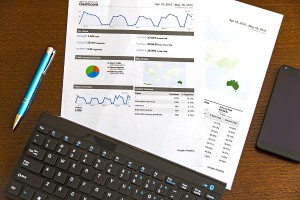 1. Market Research: Research helps to identify the current situation in the marketplace that ultimately points towards opportunities and threats organizations should be aware of as they strive to move forward.
1. Market Research: Research helps to identify the current situation in the marketplace that ultimately points towards opportunities and threats organizations should be aware of as they strive to move forward. 1. Situational Analysis: In this section of a marketing plan, the market research is discussed at length to get an in depth understanding of the marketplace. Reviews of the external environment, internal operations, product category and competition are all discussed in this section.
1. Situational Analysis: In this section of a marketing plan, the market research is discussed at length to get an in depth understanding of the marketplace. Reviews of the external environment, internal operations, product category and competition are all discussed in this section.



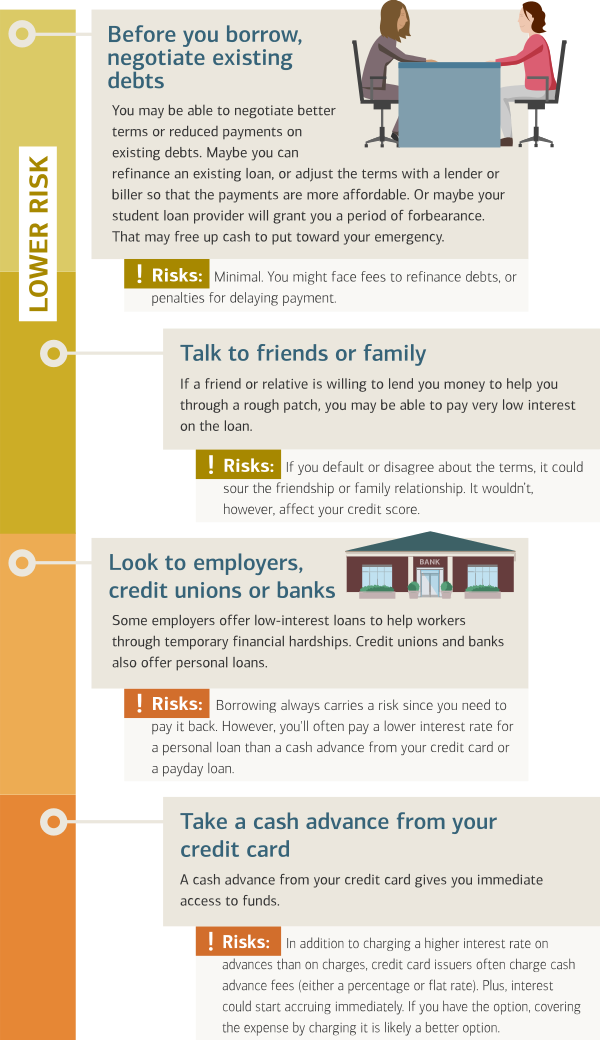


 The tricky part is that there’s a chance some of these customers don’t come through on their payments. Typically, companies make an assumption that a portion of their accounts receivable will go unpaid and account for this using something called an allowance for doubtful accounts.
The tricky part is that there’s a chance some of these customers don’t come through on their payments. Typically, companies make an assumption that a portion of their accounts receivable will go unpaid and account for this using something called an allowance for doubtful accounts.


 This tax supports retirement supplemental income and disability benefits for workers. The Social Security part of the FICA tax is 6.2% of the base salary.
This tax supports retirement supplemental income and disability benefits for workers. The Social Security part of the FICA tax is 6.2% of the base salary. The Medicare program supports healthcare for the elderly, and is the other half of FICA. The Medicare part of the FICA tax is currently 1.45% of base salary.
The Medicare program supports healthcare for the elderly, and is the other half of FICA. The Medicare part of the FICA tax is currently 1.45% of base salary.
 There are two types of bank loans – Secured and Unsecured. While the main difference is collateral, there are some other important distinctions as well.
There are two types of bank loans – Secured and Unsecured. While the main difference is collateral, there are some other important distinctions as well. Commercial paper is a debt instrument in which a firm issues an IOU to a bank, company, or wealthy individual, which provides funds to the firm. It typically makes up notes payable in current liabilities. Commercial paper has a maturity of 270 days or less, which exempts it from being registered with the SEC, providing an easy transference of funds.
Commercial paper is a debt instrument in which a firm issues an IOU to a bank, company, or wealthy individual, which provides funds to the firm. It typically makes up notes payable in current liabilities. Commercial paper has a maturity of 270 days or less, which exempts it from being registered with the SEC, providing an easy transference of funds. The biggest reason companies use debt is for financial leverage. Financial leverage is simply the use of debt to purchase assets. A firm that borrows funds by issuing debt will, in effect, have extra cash that it can use as it wishes. This is akin to a credit card. For example, a firm can use $200,000 to buy equipment by using its cash, or it can multiply that $200,000 by borrowing additional $400,000 to buy $600,000 worth of equipment. While this allows firms the ability to use more cash than it has on hand, it comes with significant risk. The more the firm borrows, the more interest it will owe on outstanding debt. While this will lower the amount of taxes the firm must pay, the firm cannot neglect interest payments, which needs to be paid out regularly. The firm must strike a good balance between using cash on hand and leverage so that it benefits without too much added risk.
The biggest reason companies use debt is for financial leverage. Financial leverage is simply the use of debt to purchase assets. A firm that borrows funds by issuing debt will, in effect, have extra cash that it can use as it wishes. This is akin to a credit card. For example, a firm can use $200,000 to buy equipment by using its cash, or it can multiply that $200,000 by borrowing additional $400,000 to buy $600,000 worth of equipment. While this allows firms the ability to use more cash than it has on hand, it comes with significant risk. The more the firm borrows, the more interest it will owe on outstanding debt. While this will lower the amount of taxes the firm must pay, the firm cannot neglect interest payments, which needs to be paid out regularly. The firm must strike a good balance between using cash on hand and leverage so that it benefits without too much added risk.
 One of the first challenges auditors and regulators faced when developing the Generally Accepted Accounting Principles (GAAP) was trying to standardize how companies account for their revenues and expenses. Before GAAP, companies had (more or less) free reign on how and when revenue and expenses were reported, leading to general confusion when trying to compare balance sheets and income statements between companies. Today, all companies need to follow these general guidelines.
One of the first challenges auditors and regulators faced when developing the Generally Accepted Accounting Principles (GAAP) was trying to standardize how companies account for their revenues and expenses. Before GAAP, companies had (more or less) free reign on how and when revenue and expenses were reported, leading to general confusion when trying to compare balance sheets and income statements between companies. Today, all companies need to follow these general guidelines. Collectability is probable
Collectability is probable According to the matching principle, expenses should be recognized in the same period as the related revenues. If expenses are recorded as they are incurred, they may not match the revenues that they relate to. If an expense is recognized too early, the company’s net income will be understated. If an expense is recognized too late, a company’s net income will be overstated.
According to the matching principle, expenses should be recognized in the same period as the related revenues. If expenses are recorded as they are incurred, they may not match the revenues that they relate to. If an expense is recognized too early, the company’s net income will be understated. If an expense is recognized too late, a company’s net income will be overstated. John owns a toy store and sells toys, usually for cash, to his customers. John generates revenue by selling toys to his customers. Occasionally, John will offer to sell his toys to regular and trusted customers on credit.
John owns a toy store and sells toys, usually for cash, to his customers. John generates revenue by selling toys to his customers. Occasionally, John will offer to sell his toys to regular and trusted customers on credit. Mike owns a barbershop. Customers go to Mike’s barbershop to get their haircut for which they pay cash. In this instance, Mike is offering a service to his clients, and generating revenue from that service. Mike employs several other barbers at his barbershop. Mike pays other barbers monthly salary. This monthly salary is considered as expense for his business.
Mike owns a barbershop. Customers go to Mike’s barbershop to get their haircut for which they pay cash. In this instance, Mike is offering a service to his clients, and generating revenue from that service. Mike employs several other barbers at his barbershop. Mike pays other barbers monthly salary. This monthly salary is considered as expense for his business.
 If companies are unable, or do not want to reduce its prices, it can still get the edge by adding unique features to the product, forming effective marketing strategies or developing any other strategy that differentiates the product and makes it more valuable for customers. This is called “product differentiation”, meaning what they make and sell is different from what any other company makes or sells. This could be derived from adding new features to their products, launching marketing campaigns that make more people aware of their products than the competition, or having a great reputation with customers that encourages them to keep coming back.
If companies are unable, or do not want to reduce its prices, it can still get the edge by adding unique features to the product, forming effective marketing strategies or developing any other strategy that differentiates the product and makes it more valuable for customers. This is called “product differentiation”, meaning what they make and sell is different from what any other company makes or sells. This could be derived from adding new features to their products, launching marketing campaigns that make more people aware of their products than the competition, or having a great reputation with customers that encourages them to keep coming back.
 One of the most popular ways of looking at competitive advantage is conducting a SWOT analysis. SWOT is an acronym for strengths, weaknesses, opportunities, and threats. This is an analysis of a company’s internal and external environment. This tool enables managers to develop strategies to remain competitive. A company’s internal strengths and weaknesses is relative to its external opportunities and threats. While its core competence can be considered a strength, to stay competitive, the firm needs to exploit any opportunities available, work on minimizing its weaknesses and protect itself from potential threats. The business that can sustainably do so will survive in the long run.
One of the most popular ways of looking at competitive advantage is conducting a SWOT analysis. SWOT is an acronym for strengths, weaknesses, opportunities, and threats. This is an analysis of a company’s internal and external environment. This tool enables managers to develop strategies to remain competitive. A company’s internal strengths and weaknesses is relative to its external opportunities and threats. While its core competence can be considered a strength, to stay competitive, the firm needs to exploit any opportunities available, work on minimizing its weaknesses and protect itself from potential threats. The business that can sustainably do so will survive in the long run. Competitive advantage comes from superior performance which comes from a company having the right combination of resources. Resources can be both tangible and intangible. Tangible resources are physical things like land and machinery, whereas intangible resources are more abstract like intellectual property and goodwill. Companies can determine if it has the right combination of resources to be at a competitive advantage by using the VRIO framework.
Competitive advantage comes from superior performance which comes from a company having the right combination of resources. Resources can be both tangible and intangible. Tangible resources are physical things like land and machinery, whereas intangible resources are more abstract like intellectual property and goodwill. Companies can determine if it has the right combination of resources to be at a competitive advantage by using the VRIO framework. Financial ratios are often categorized in four main categories. Activity ratios which provide investors with an idea of the overall performance of the organization. This includes inventory turnover, which is calculated by calculating cost of goods sold by average inventory. A high inventory turnover is a positive indicator as it shows that inventory is selling fast. Similarly, there is a receivables turnover and payables turnover that indicate how fast the company can collect from its debtors and how fast it pays back to its creditors, respectively. A high asset turnover ratio indicates that a firm efficiently uses its assets to generate revenue, which is a good indicator that a firm is currently enjoying a competitive advantage in its field.
Financial ratios are often categorized in four main categories. Activity ratios which provide investors with an idea of the overall performance of the organization. This includes inventory turnover, which is calculated by calculating cost of goods sold by average inventory. A high inventory turnover is a positive indicator as it shows that inventory is selling fast. Similarly, there is a receivables turnover and payables turnover that indicate how fast the company can collect from its debtors and how fast it pays back to its creditors, respectively. A high asset turnover ratio indicates that a firm efficiently uses its assets to generate revenue, which is a good indicator that a firm is currently enjoying a competitive advantage in its field. Creditors and investors widely use liquidity ratios when deciding whether to extend a loan or make an investment. They include current ratio, quick ratio and cash ratio; all of which focus on a firm’s short term assets and liabilities. Creditors need to know if a firm is liquid enough to be able to pay back their short-term debts.
Creditors and investors widely use liquidity ratios when deciding whether to extend a loan or make an investment. They include current ratio, quick ratio and cash ratio; all of which focus on a firm’s short term assets and liabilities. Creditors need to know if a firm is liquid enough to be able to pay back their short-term debts. Solvency ratios focus more a company’s long-term obligations. Lenders give loans to businesses only if they’re sure that the business has the ability to make regular interest payments and that they’re not going to default. That is why ratios like debt-to-asset, debt-to-equity and interest coverage are used to measure solvency.
Solvency ratios focus more a company’s long-term obligations. Lenders give loans to businesses only if they’re sure that the business has the ability to make regular interest payments and that they’re not going to default. That is why ratios like debt-to-asset, debt-to-equity and interest coverage are used to measure solvency. Profitability ratios are the most popular when it comes to financial ratios and they are also very easy to understand. They measure how profitable a business is by calculating gross-profit margin or net profit margin, return on assets or return on equity. Higher returns provide a positive indicator for firms.
Profitability ratios are the most popular when it comes to financial ratios and they are also very easy to understand. They measure how profitable a business is by calculating gross-profit margin or net profit margin, return on assets or return on equity. Higher returns provide a positive indicator for firms.
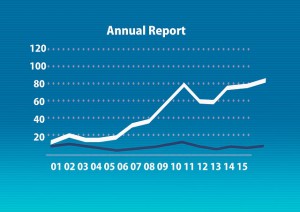 The purpose of financial reporting is to provide users with information about a company.
The purpose of financial reporting is to provide users with information about a company. Predictive value is relevant because it helps users forecast and set their own expectations for the future.
Predictive value is relevant because it helps users forecast and set their own expectations for the future. Assets are resources resulting from past events or transactions in which future economic benefits are expected. Assets may be short-term (cash, accounts receivable, pre-paid assets) or long-term (building, land, office equipment), but either way, they will benefit the company in the future.
Assets are resources resulting from past events or transactions in which future economic benefits are expected. Assets may be short-term (cash, accounts receivable, pre-paid assets) or long-term (building, land, office equipment), but either way, they will benefit the company in the future. Monetary unit assumes that money is the constant in accounting; everything in the financial statements must be expressed in dollars or “monetary terms.” If an economic activity cannot be expressed in dollars, it is not recorded. Additionally, this assumes that the U.S. dollar is stable, therefore, no adjustments need be made for inflation.
Monetary unit assumes that money is the constant in accounting; everything in the financial statements must be expressed in dollars or “monetary terms.” If an economic activity cannot be expressed in dollars, it is not recorded. Additionally, this assumes that the U.S. dollar is stable, therefore, no adjustments need be made for inflation. Revenue recognition principle details how a company records its revenue. Under this principal, revenues are recorded in the period that they are earned and not necessarily when cash is received. This is important to understand when customers pay you on credit. Even though you don’t have cash-in-hand, you still earned the revenue, and therefore need to record it on that day (not the day you receive payment!).
Revenue recognition principle details how a company records its revenue. Under this principal, revenues are recorded in the period that they are earned and not necessarily when cash is received. This is important to understand when customers pay you on credit. Even though you don’t have cash-in-hand, you still earned the revenue, and therefore need to record it on that day (not the day you receive payment!).
 Your biggest investment you will ever make is investing in yourself. Being part of student and professional accounting organizations are essential to market yourself and it stands out to employers on your résumé, and on interviews.
Your biggest investment you will ever make is investing in yourself. Being part of student and professional accounting organizations are essential to market yourself and it stands out to employers on your résumé, and on interviews. The American Institute of CPAs is the world’s largest member association that represents accounting professionals and has a goal to set ethical standards. When you join as a student, it is completely free. You will receive special discounts for review courses, training, guidance and networking opportunities.
The American Institute of CPAs is the world’s largest member association that represents accounting professionals and has a goal to set ethical standards. When you join as a student, it is completely free. You will receive special discounts for review courses, training, guidance and networking opportunities. The National Association of Enrolled Agents is an organization dedicated to Enrolled Agents, most commonly referred to as America’s Tax Experts. Being a member gives you access to special review courses, monthly tax magazines, free membership to students, and discounts for CPE courses.
The National Association of Enrolled Agents is an organization dedicated to Enrolled Agents, most commonly referred to as America’s Tax Experts. Being a member gives you access to special review courses, monthly tax magazines, free membership to students, and discounts for CPE courses. Wealth managers manage and invest people’s money to help them become financially secure in their future. They offer retirement, savings, investment, and estate advice for the benefit of their clients. Wealth managers take on the responsibility to analyze individual tax returns or high net worth individuals to create future savings plans for them.
Wealth managers manage and invest people’s money to help them become financially secure in their future. They offer retirement, savings, investment, and estate advice for the benefit of their clients. Wealth managers take on the responsibility to analyze individual tax returns or high net worth individuals to create future savings plans for them. Accountants also work on computers and with various types of software, so knowing computer language and information technology is important in case there is a glitch in the software or if you make a mistake. Knowing your computer and software very well will allow you to fix minor problems easily. There are also certifications for Quickbooks (popular accounting software), which can allow you to teach courses, be a representative, and receive higher pay at your job.
Accountants also work on computers and with various types of software, so knowing computer language and information technology is important in case there is a glitch in the software or if you make a mistake. Knowing your computer and software very well will allow you to fix minor problems easily. There are also certifications for Quickbooks (popular accounting software), which can allow you to teach courses, be a representative, and receive higher pay at your job. Communication skills are also very important. You will be talking to handfuls of people almost every day, so knowing how to interact with them is important in order to get complete information. Not only will you have to communicate with clients, but with upper management as well. Being friendly and explaining complicated tax law to clients in a way that they can understand is key to building a respective client base.
Communication skills are also very important. You will be talking to handfuls of people almost every day, so knowing how to interact with them is important in order to get complete information. Not only will you have to communicate with clients, but with upper management as well. Being friendly and explaining complicated tax law to clients in a way that they can understand is key to building a respective client base. Working in the accounting field, you will be analyzing financial statements, tax returns, and supplemental client data. Having strong analytical skills is very important because you will be able to find any type of misstatement or find wrongly classified information on the clients’ books. Being able to analyze financial statements and know what you are looking for is very important to succeeding in your field of work.
Working in the accounting field, you will be analyzing financial statements, tax returns, and supplemental client data. Having strong analytical skills is very important because you will be able to find any type of misstatement or find wrongly classified information on the clients’ books. Being able to analyze financial statements and know what you are looking for is very important to succeeding in your field of work.



 Franchising is a form of ownership far different from the ones previously mentioned. This form of ownership allows a franchisee to borrow the franchisor’s business model and brand for a specified period. It comes with a list of advantages including: training on how to operate your franchise, systems and technologies for day-to-day operations, guidance on marketing, advertising and other business needs, and a network of franchise owners to share experiences with.
Franchising is a form of ownership far different from the ones previously mentioned. This form of ownership allows a franchisee to borrow the franchisor’s business model and brand for a specified period. It comes with a list of advantages including: training on how to operate your franchise, systems and technologies for day-to-day operations, guidance on marketing, advertising and other business needs, and a network of franchise owners to share experiences with.



 When a company suffers from low employee efficiency, the biggest culprit is usually “job ambiguity”. This is where individual employees do not have their roles in the organization clearly defined. Employees need precise job descriptions to be liable for their performance – by reducing uncertainty, employees can develop skills to better perform their job, and gives managers more accurate ways to measure performance.
When a company suffers from low employee efficiency, the biggest culprit is usually “job ambiguity”. This is where individual employees do not have their roles in the organization clearly defined. Employees need precise job descriptions to be liable for their performance – by reducing uncertainty, employees can develop skills to better perform their job, and gives managers more accurate ways to measure performance. Specific
Specific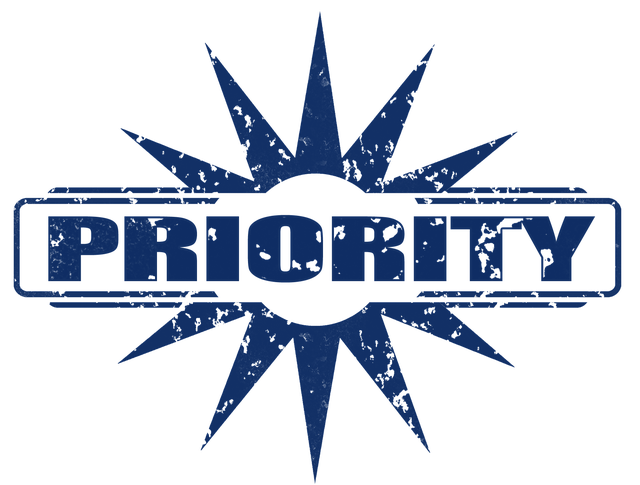
 Retained earnings is one of the most useful numbers taken off the balance sheet. It shows how much money the firm keeps after all other payments and expenses have been accounted for. “Retained earnings” is basically net income minus any cash dividends the company pays out to shareholders. On the balance sheet, retained earnings is added to an account known as “accumulated retained earnings”. These earnings are “retained” by the company to invest in growth projects, pay off debt, etc.
Retained earnings is one of the most useful numbers taken off the balance sheet. It shows how much money the firm keeps after all other payments and expenses have been accounted for. “Retained earnings” is basically net income minus any cash dividends the company pays out to shareholders. On the balance sheet, retained earnings is added to an account known as “accumulated retained earnings”. These earnings are “retained” by the company to invest in growth projects, pay off debt, etc. Preferred stock is a less common form of equity. Preferred stock acts somewhat like debt because it has no voting rights and typically earns a fixed dividend. Unlike debt, owners of preferred stock get these dividends forever. Preferred stockholders also have a claim on a firm’s assets before common stock holders do. This means preferred stockholders always get paid dividends first. If the company goes bankrupt, preferred stockholders also get “first claim” on any remaining assets after all debts are paid.
Preferred stock is a less common form of equity. Preferred stock acts somewhat like debt because it has no voting rights and typically earns a fixed dividend. Unlike debt, owners of preferred stock get these dividends forever. Preferred stockholders also have a claim on a firm’s assets before common stock holders do. This means preferred stockholders always get paid dividends first. If the company goes bankrupt, preferred stockholders also get “first claim” on any remaining assets after all debts are paid. Other Comprehensive Income (OCI) is all the income a company makes that is not on the
Other Comprehensive Income (OCI) is all the income a company makes that is not on the 









 Gross margin compares the first two lines on the income statement: sales and cost of goods sold. Cost of goods sold is the amount a company spends to obtain the goods they are selling. Let’s say I own a hat company. My cost of goods sold would be the money I spend either buying the hats from a supplier or on the materials and direct labor necessary to produce them myself. For many companies, cost of goods sold is the largest expense.
Gross margin compares the first two lines on the income statement: sales and cost of goods sold. Cost of goods sold is the amount a company spends to obtain the goods they are selling. Let’s say I own a hat company. My cost of goods sold would be the money I spend either buying the hats from a supplier or on the materials and direct labor necessary to produce them myself. For many companies, cost of goods sold is the largest expense. Whereas those profitability ratios focused on income statement items, liquidity and solvency are mainly concerned with the strength of a company’s balance sheet. The concept of liquidity centers upon a business’s ability to handle short-term obligations like accounts payable, accruals, and debt that is due within one year.
Whereas those profitability ratios focused on income statement items, liquidity and solvency are mainly concerned with the strength of a company’s balance sheet. The concept of liquidity centers upon a business’s ability to handle short-term obligations like accounts payable, accruals, and debt that is due within one year.





